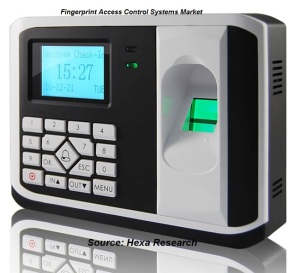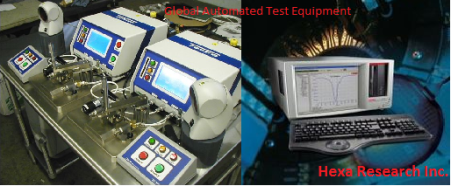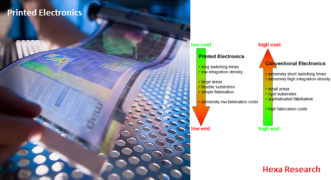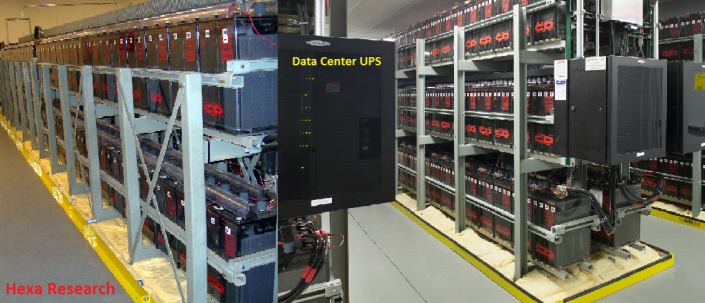Semiconductors & Electronics
Fingerprint Access Control Systems Market Size Is Expected To Reach USD 4.4 Billion By 2022

Industry Overview
Global fingerprint access control systems market size is expected to reach USD 4.4 billion by 2022, growing at a CAGR of over 7% from 2015 to 2022. Escalating safety and security threats is anticipated to drive industry growth. Fingerprint authentication offers a reliable solution to enhance access control thus, assists to mitigate security breaches as well as transaction frauds.
The global smartphone industry was valued at USD 2.5 billion in 2013. It is expected to reach USD 4.4 billion by 2022, growing at a CAGR of 7% over the coming years. The emergence of multi-functional and cost-effective smartphones is expected to fuel growth. Huge demand from Asia Pacific is estimated to drive fingerprint access control systems market demand.
Browse Detail Report With TOC @ http://www.hexaresearch.com/research-report/fingerprint-access-control-systems-market/
The highly competitive business environment is likely to boost confidentiality needs for organizational data and information. Biometric systems market is anticipated to witness significant growth owing to the incapability of password and security PINs to safeguard the data. This safety equipment is increasingly implemented for home fortification. Government around the globe is now taking stringent initiatives for biometric enrolment of their citizens. The advent of projects such as national identification programs, e-passports and border control are expected to drive industry growth. This measure can be attributed to secure borders, prosecute criminals, verify immigration or employment and combat identity fraud or terrorism.
Implementation of this system requires huge capital investment. Apart from installation cost, it also involves allied expenses such as enrolling users, administering the system and training expenditures. However, theft or misuse of data is likely to pose a serious risk to the individual’s security. The fingerprint access control system market is expanding its roots into commercial, government as well as healthcare sectors. Its high penetration rate is projected to pose potential opportunities to the industry demand.
Product Overview
Capacitive products accounted for over 27% of the overall industry share in 2014. It is anticipated to exceed over USD 1.3 billion by 2022 owing to its low cost as well as compact size. Optical products were valued over USD 900 million in 2014. It is estimated to grow at a CAGR of over 7% from 2015 to 2022. The growth can be attributed to high image quality robust long life of the system.
Request A Sample copy of This Report @http://www.hexaresearch.com/sample/295
Application Overview
The commercial application was the leading segment, valued over USD 850 million in 2014. It is expected to exceed USD 1.4 billion by 2022, growing at a CAGR of 6.5% over the forecast period. The surge can be addressed to rising safety as well as security demands in various organizations. Consumer electronics accounted for over 4.5% of the overall market share. The growth can be accredited to rapid growing need for access control features in tablets & smartphones.
Regional Overview
North America fingerprint access control systems market was sized over USD 850 million in 2014. It is projected to accumulate more than 30% of the overall industry share by 2022. Regional growth can be attributed to the flourishing biometric application in healthcare as well as consumer electronics industries.
Asia Pacific fingerprint access control systems market is expected to witness considerable growth owing to increasing government initiatives in the region. It is likely to grow at a CAGR of over 7.5% from 2015 to 2022.
Competitive Market Share
The global fingerprint access control systems market share is highly consolidated by top three companies. 3M Cogent, Safran Group, and NEC Corporation are estimated to account for more than 70% of the overall industry share in U.S. Other key players in U.S industry include Suprema, HID Global (Assa Abloy), Cross Match, Fingerprint Cards (FPC), Aware Inc, SecuGen, Daon Inc and Anviz Global among others.
Browse Full Report @ http://www.hexaresearch.com/research-report/fingerprint-access-control-systems-market/
Automated Test Equipment (ATE) Market Size Is Expected To Reach USD 4,476.2 Million By 2020
Industry Overview
Global Automated Test Equipment (ATE) market size is expected to reach USD 4,476.2 million by 2020, growing at a CAGR of 2.5% from 2014 to 2020. Increasing design complexity coupled with need for effective testing is expected to drive demand growth over the next six years. It offers more features and amplified device integration. Increasing consumer demand for improved functionality, bandwidth, and performance designing are factors responsible for the industry growth. In addition, manufacturers are adopting high-level product differentiation that invariably demands high complexity in ATE designs.
Increasing need for optimizing power management in order to ensure longer battery life for consumer electronic devices is expected to fuel ATE market growth over the forecast period. The expansion of smartphones, tablets and system-on-chip (SoC) based products is generating demand for greater functionality. Smartphone proliferation has also been instrumental in escalating the demand for semiconductors, which has further fostered automated test equipment market.
Browse Detail Report With TOC @ http://www.hexaresearch.com/research-report/automated-test-equipment-market/
Key test point techniques analyzed and reported in this automated test equipment market report include wafer probing, burn-in and final test. Wafer probing is expected to lose share over the forecast period. It accounted for over 39% of the overall share in 2013. This can be attributed to the miniaturization of semiconductor devices and significant cost-benefits associated. Final test accounted for over 33% of the overall share in 2013.
 Strong need for effective testing is expected to spur demand over the forecast period from 2014 to 2020. The benefits offered by semiconductor testing include reduced-cost, miniaturization of components, improved flexibility, modularity, technical capability and reliability. Besides this, high-level integration including RF and wireless technology and rapid product development are the new norms driving the demand for effective testing solutions. In addition, technological proliferation, increasing consumer demand for improved product functionality and the need to gain competitive advantage have bolstered the need for effective testing solutions.
Strong need for effective testing is expected to spur demand over the forecast period from 2014 to 2020. The benefits offered by semiconductor testing include reduced-cost, miniaturization of components, improved flexibility, modularity, technical capability and reliability. Besides this, high-level integration including RF and wireless technology and rapid product development are the new norms driving the demand for effective testing solutions. In addition, technological proliferation, increasing consumer demand for improved product functionality and the need to gain competitive advantage have bolstered the need for effective testing solutions.
Dependency on semiconductor chips is expected to pose a challenge to the growth of ATE market. The fluctuations in demand for semiconductor chips has led to a gap in the demand and supply, thus industry participants experience volatile revenue that adversely affects their profitability. For instance, in 2011, reduction in production of electronic products owing to natural disasters such as the floods in Thailand and the Great East Japan Earthquake has resulted in significant losses for industry participants.
Product Overview
Non-memory was the leading ATE market product segment and was valued over USD 2,000.0 million in 2013. This can be attributed to the expansion of consumer electronics, increasing automotive demand and growing number of microcontroller-based applications.
Request A Sample copy of This Report @http://www.hexaresearch.com/sample/280
Memory was the second largest product segment and was valued over USD 800.0 million in 2013, growing at a rate of over 1% from 2014 to 2020. The cyclical variations in growth rates than non-memory semiconductors have resulted in gaining popularity among various applications. Discrete is fastest growing product segment and expected to reach over USD 120.0 million by 2020.
Application Overview
IT & telecommunication industry is the highest revenue generator application segment. It was valued over USD 1,500.0 million in 2013 and expected to reach over USD 2,000.0 million by 2020. ATE enables Telecom Equipment Manufacturers (TEMs) in ensuring consistent quality for their products, and Communication Service Providers (CSPs) to enhance their network in order to support new technologies.
Consumer electronics sector is the second largest application segment and was valued over USD 1,000.0 million in 2013, growing at a CAGR of over 3% from 2014 to 2020. Increasing popularity of consumer devices such as tablets, smartphones and computers is expected to be the key growth driver. Defense sector is the fastest growing application sector and expected to reach over USD 170.0 million by 2020.
Regional Overview
Asia Pacific automated test equipment market dominated demand with valuation of over USD 2,000.0 million in 2013, growing at a CAGR of over 2% from 2014 to 2020. This can be attributed to a large number of semiconductor industries in the region. In addition, innovations in technology and changing customer needs have also contributed positively towards the regional growth.
North America was the second largest regional industry and accounted for over 15% of the total demand share in 2013. Heavy investment in innovation for defense applications, along with developments in the telecommunication sector is expected to drive the region over the forecast period.
Competitive Market Share
The global automated test equipment market share is highly consolidated, with the top three companies accounting for over 80% of the total share in 2013.
Teradyne Inc. emerged as the leading company in the global industry and accounted for over 40% of the total consumption in 2013. Rest of the companies such as Advantest Corporation, LTX-Credence Corporation, Yokogawa, Aeroflex Inc., Advint LLC, Anritsu Co., Cal-Bay Systems and National Instruments Corp. among others accounted for approximately 60% of the industry share in 2013.
Browse Full Report @ http://www.hexaresearch.com/research-report/automated-test-equipment-market/

 Industry Overview
Industry Overview